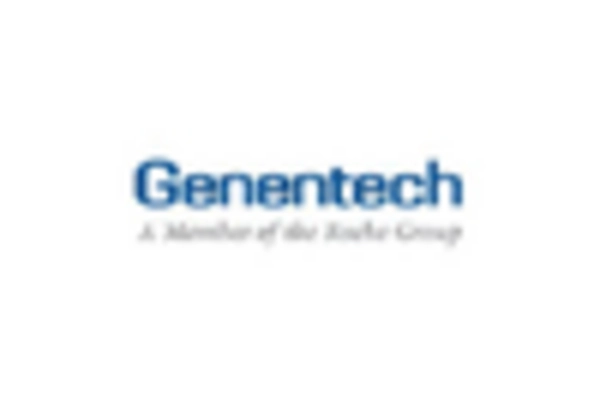Rising Incidence of Stroke
The increasing prevalence of stroke disorders is a primary driver for The Global Stroke Disorder and Treatment Industry. According to recent statistics, stroke remains one of the leading causes of mortality and morbidity worldwide, with an estimated 15 million people experiencing a stroke each year. This alarming trend necessitates enhanced treatment options and preventive measures, thereby propelling market growth. The aging population, particularly in developed regions, contributes significantly to this rise, as older adults are at a higher risk for stroke. Furthermore, lifestyle factors such as obesity, hypertension, and diabetes are becoming more prevalent, further exacerbating the situation. As a result, healthcare systems are compelled to invest in innovative therapies and rehabilitation services, which in turn stimulates the market for stroke treatment solutions.
Growing Awareness and Education
Increased awareness regarding stroke symptoms and risk factors is a vital driver for The Global Stroke Disorder and Treatment Industry. Public health campaigns and educational initiatives have been instrumental in informing individuals about the importance of recognizing stroke signs, such as sudden numbness, confusion, and difficulty speaking. This heightened awareness encourages individuals to seek immediate medical attention, which is critical for effective treatment. Moreover, healthcare providers are increasingly focusing on educating patients about lifestyle modifications that can reduce stroke risk, such as maintaining a healthy diet and engaging in regular physical activity. As more people become informed about stroke prevention and treatment options, the demand for related healthcare services and products is expected to rise, thereby positively impacting market growth.
Advancements in Medical Technology
Technological innovations play a crucial role in shaping The Global Stroke Disorder and Treatment Industry. The development of advanced imaging techniques, such as MRI and CT scans, has revolutionized the diagnosis and management of stroke. These technologies enable healthcare professionals to identify stroke types and severity more accurately, leading to timely interventions. Additionally, the emergence of minimally invasive surgical techniques and novel pharmacological treatments has improved patient outcomes significantly. For instance, the introduction of thrombectomy devices has shown promising results in acute ischemic stroke cases, enhancing recovery rates. The market is also witnessing the integration of artificial intelligence in diagnostic tools, which may further streamline treatment protocols. As these technologies continue to evolve, they are likely to drive market expansion by offering more effective and efficient treatment options.
Government Initiatives and Funding
Government policies and funding initiatives aimed at stroke prevention and treatment significantly influence The Global Stroke Disorder and Treatment Industry. Many countries are implementing national stroke strategies that prioritize research, awareness, and access to care. For instance, funding for stroke research has increased, leading to the development of new therapies and treatment protocols. Additionally, governments are investing in healthcare infrastructure to ensure that patients receive timely and effective care. These initiatives not only enhance the quality of care but also promote the adoption of innovative treatment solutions. Furthermore, public health programs aimed at reducing risk factors associated with stroke, such as smoking cessation and hypertension management, are likely to contribute to a decrease in stroke incidence, ultimately affecting market dynamics.
Rising Demand for Rehabilitation Services
The growing need for rehabilitation services following stroke events is a significant driver for The Global Stroke Disorder and Treatment Industry. As survival rates improve due to advancements in acute stroke care, there is an increasing focus on post-stroke rehabilitation to enhance recovery and quality of life. Rehabilitation services, including physical therapy, occupational therapy, and speech therapy, are essential for helping stroke survivors regain their independence. The market for these services is expanding, driven by the recognition of the long-term impacts of stroke and the need for comprehensive care. Additionally, the integration of technology in rehabilitation, such as virtual reality and robotic-assisted therapy, is likely to enhance treatment efficacy and patient engagement. As the demand for effective rehabilitation solutions continues to rise, it will further stimulate growth in the stroke treatment market.


















Leave a Comment